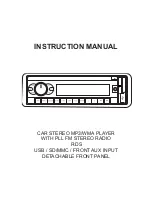
Modes of Operation
Analog Mode Operation
F6 Modulation
The principle of F6 modulation (Frequency-Shift Keying (FSK)) is applied with the
SWT 3000. Therefore, only one of the possible frequencies is ever transmitted.
This transmission method enables the available transmit power to be used to the
full.
Security
The influence of burst interferences with amplitudes that can be greater than the
desired signal is suppressed. This suppression is achieved by limiting the ampli-
tude of the input signal with the largest possible bandwidth and then analyzing
the frequency with a small bandwidth. Burst interferences are generated, for
example, by lightning strike or by switching operations in high-voltage systems.
An optimum setting of the evaluation thresholds and the integration times
warrants maximum security against unwanted tripping and a high degree of reli-
ability at the same time. Protection commands are still transmitted in time
despite serious interference.
Coded Tripping (CT)
The CT function is available for the analog line interface. The command codes
consist of 2 simultaneously transmitted trip frequencies (parallel coding).
Digital Mode Operation
General
The digital line interfaces LID-1 and LID-2 are needed for transmitting the protec-
tion commands via a digital network. The data for the Remote Maintenance (RM)
and the Service Channel (SC) interfaces and the system-internal control informa-
tion are transmitted additionally.
Transmission concept
Information is transmitted via the digital interface with the periodic transmission
of 4 message types with constant length.
The messages have the following priority among each other:
•
Tripping command information = priority 1
•
Service channel = priority 2
•
Remote maintenance = priority 3
•
System-internal control information = priority 4
Command transmission
Each command message is transmitted 4 times with a hamming distance of 4.
The receiving end checks whether 3 identical command messages have been
received. The command is not valid until this check has been successfully carried
out.
i
i
NOTE
RM is also possible in an analog operation mode.
Features
The transmission features are as follows:
•
Frequency generation and evaluation by digital signal processor (DSP)
•
Full utilization of the available transmit power since only one of the possible frequencies is ever trans-
mitted
•
Burst interferences with greater amplitudes than the desired signal are largely suppressed
•
Noise analysis in the unused desired signaling circuits
•
Analog and digital line interfaces
2.2.5
2.2.5.1
2.2.5.2
2.2.6
Functional Description
2.2 Applications for Transmission
36
Smart Communication, SWT 3000 Teleprotection, Equipment Manual
C53000-G6040-C605-1, Edition 03.2020
















































